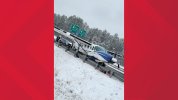Some planes have autofeather, like most King Air models. The Caravan does not. I seem to recall it being pretty quick after shutdown that it will go to feather, although we very rarely ever shut them down without feathering them first. Generally we would feather them rolling and shut the engines off to prevent picking up gravel. I’ve never shut one down in the air though, so no idea what kinda time frame that would be.
Most of my Caravan time is in Garret Caravans but I seem to remember during engine failure practice turning the igniters on, standby fuel pump on, verifying that both fuel tanks are on, and then trying the Emergency Power Lever, which is a backup to the fuel control unit that only exists on single-engine PT6 powered aircraft (In the PC12 it is called the MOR, or Manual Override Lever). If that was unsuccessful, feather the engine and find your spot. There’s not too many things out there that can stop a PT6, short of blowing chunks out of the exhaust, a high-pressure fuel pump failure, gearbox failure (I have never heard of one of these occurring FWIW) or an improperly handled FCU failure. Generally the soap samples on turbine engines will tell you of an impending coming-from-together event long before it happens, which pretty much just leaves the high pressure pump, gearbox, or the FCU.
FWIW, I agree with one of the above posters that the motor was making power when it hit. In the event of a FCU failure, the motor will roll back to whatever idle is set at. It is possible that this occurred and the EPL wasn’t utilized. The issue with recognizing an EPL failure is that the engine is continuing to run, but not responding to the power lever at all. Not placing blame, the pilot did an excellent job, but those blades were definitely spinning with some inertia behind them (IMO) when they started smacking something hard. A feathered, not running PT6 will not be spinning very fast (if at all).
edit: I also think that looking at the pictures the prop was feathered when it started whacking stuff, and most likely making (at minimum) idle power.


